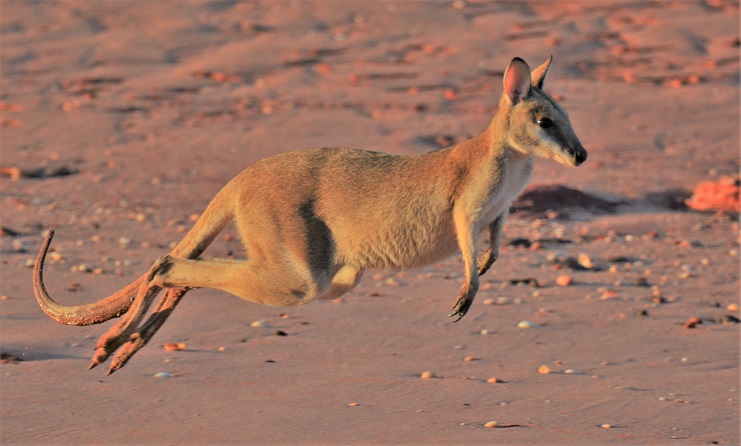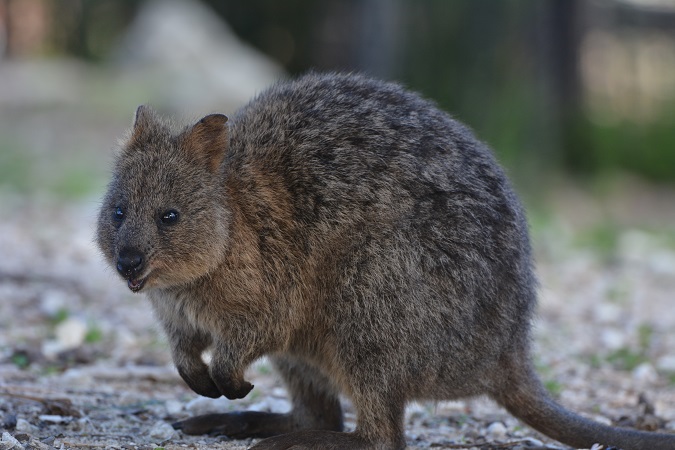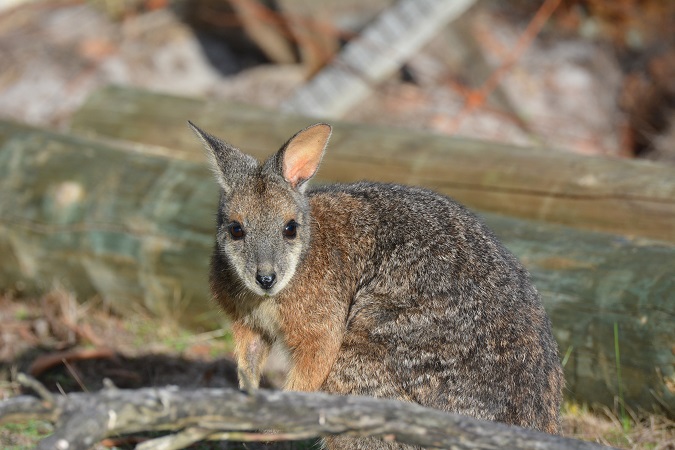
So you think you know what a Kangaroo is? Think again.
Updated May 2022
Everyone has seen photos of Kangaroos and knows that they live in Australia. Most people also know that Kangaroos are marsupials–animals that carry their babies in a pouch. But there is so much more about Kangaroos–information that will surprise you. Start with the fact that members of the Kangaroo family live in three different countries. Not only Australia but also Papua New Guinea and Indonesia.
A Big Family
Most people think that there is only one kind of Kangaroo, but there are 53 different species. The scientific name for the Kangaroo family is Macropod. This includes Kangaroos, Wallabies, Rock Wallabies, Nail-tailed Wallabies, Hare Wallabies, Tree Kangaroos, Wallaroos, Quokkas, Pademelons, Bettongs, Potoroos and Dorcopsis. Macropod means “big feet,” an excellent name for this family of animals.
The Big Guys
Although there are many different species of Kangaroos, the term “Kangaroo” is applied only to the largest ones, which grow to heights of up to two metres. Here are photos are descriptions of the three biggest ones.
Red Kangaroo
The female Red Kangaroo is more grey than red. The young male behind her will grow to about two metres (6 feet).
Eastern Grey Kangaroo
Eastern Grey Kangaroos can be identified by the white marks on their ears, black feet, and black tip on their tail.
Western Grey Kangaroo
Western Grey Kangaroos are challenging to distinguish from their eastern cousin. The western version is a darker grey with a darker face and a black patch on the elbow. The best identification method is by location, except in the south centre of Australia where the ranges of the eastern and western overlap.
Wallaby
Most of the other members of the Kangaroo family are called Wallabies. A Wallaby is simply a small Kangaroo. Wallabies vary in size from 46 cm (nose to tail of the Dwarf Wallaby) up to almost two metres in height, just a little less than the big Kangaroos. Here are a few photos of the ones I have seen during my tour of Australia. There are many others.
Agile Wallaby
The Agile Wallaby is Australia’s most common Macropod. They are a light tan with a white stripe across the face and grey feet and tail, making them easy to identify. They are a fair size, reaching 85 cm (33 in). (Note that my measurements are of the animal’s height, not the length, which would include the tail).
Swamp Wallaby
The Swamp Wallaby is easy to identify. It is grey with reddish-brown around the ears on the belly. It can attain a height of 76 cm (30 in) and is found only along Australia’s east and southeast coasts.
Tammar Wallaby
The Tammar Wallaby is one of the smaller members of the macropod family, reaching 59 to 68 cm (23–27 in). These cute little guys are found only on Kangaroo Island in South Australia and a few isolated places in the country’s southwest corner. They are nocturnal but can also be seen in the early morning or before dark.
Wallaroo
There are three species of Wallaroo, which are intermediate in size between the big Kangaroos and Wallabies.
Rock Wallaby
The Rock Wallaby is the mountain goat of the Kangaroo family. Their feet have pads adapted to grip rocks rather than claws for getting a grip in the soil that most Kangaroos and Wallabies have.
Black-footed Rock Wallaby
You will have to hike up into the hills to find the cute, little Black-footed Rock Wallaby. They are classified as “near-threatened”. There are just 50 of them left in South Australia. The best place to find them is around the country’s centre near Alice Springs. The Black-footed Rock Wallaby was once widespread across Australia, but they are easy prey for introduced animals such as foxes, dogs, and cats due to their small size. They are most active at night, but you might be able to find them if you are energetic enough to go mountain hiking at first light. They are grey, black and white, with a black stripe across the face. Rock Wallabies are very agile and hop from boulder to boulder with ease. You will also have to be very agile to get a photo of one.
Quokka


The Quokka is a strange animal. Early explorers thought that it was some kind of a rat. About the size of a domestic cat, it is a marsupial and not a rodent. Although it has the face and tail of a rat, the body in between is definitely that of a Kangaroo. They are very rare on the Australian mainland where they are vulnerable to predation from introduced animals such as dogs and foxes, but common and tame on Rottnest Island, off the coast of Perth.
Tree Kangaroos
Would you be surprised if you saw a large Kangaroo at the top of a tall tree? There are several species of Kangaroos that do climb trees and eat leaves. Two species of Tree Kangaroos live in the tropical north of Queensland, the remainder live in New Guinea and a few small Indonesian islands. The two species that can be found in Australia are the Bennett’s Tree Kangaroo and the Lumholtz Tree Kangaroo. Tree Kangaroos are threatened by lack of habitat due to logging. They vary in size up to 90 cm (35 in) not including the tail which is much longer than other kangaroos and can be longer than the body.
Bettongs
Bettongs are another rat-like member of the macropod family. They are often called rat-kangaroos. They are even smaller than the Quokka, being up to 400 mm in length.
Potoroo
The Potoroo is another small macropod, about the size of a rabbit. All three species are threatened with extinction if not protected from introduced species and habitat loss. Gilbert’s Potoroo was thought to be extinct but has been rediscovered in 1994. Due to conservation efforts, the population of Gilbert’s Potoroo is now more than 100.
Hare-wallaby
Hare-wallabies are rabbit sized Wallabies that also somewhat resemble a rabbit. Of the four species of Hare-wallabies, one is extinct and two survive only on a couple of small islands off the west coast of Australia. They were once common and widespread, but predation by introduced animals has exterminated them on the mainland.
Pademelon
Pademelons are similar to Kangaroos and Wallabies, the only difference being size. They are a little smaller than Wallabies. Also, they’re shorter and have thicker tails than Wallabies.
Dorcopsis
The Dorcopsis is a member of the macropod family that lives only in New Guinea and nearby islands of Indonesia. Many publications state that macropods are endemic to Australia. However, this one does not even exist in Australia.
Summary
So you see, there is a lot more to the Kangaroo family than you thought. And I have only touched the surface; mentioned only a few of the more than 50 different species. So if you go to Australia, take the time to study the Kangaroos that you see. How many different species can you find?







